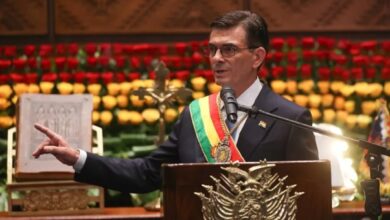Mexico’s Central Bank Eyes Rate Adjustments in Response to Inflation Trends
According to insights shared by board member Jonathan Heath, Mexico's central bank is closely monitoring inflation dynamics and could consider making interest rate adjustments by February or March 2024. Heath emphasized that a significant factor in this decision would be the trajectory of core prices, highlighting the central bank's commitment to achieving its inflation targets.

Photo: Freepik
The Latin American Post Staff
Escucha este artículo
Leer en español: El Banco Central de México contempla ajustes de tasas en respuesta a las tendencias inflacionarias
Navigating Monetary Policy Challenges: Insights from Heath's Interview
In a recent interview with a local radio station, Imagen Radio, Heath articulated the central bank's intention to maintain a vigilant stance on monetary policy for an extended period. He stressed that any potential rate cuts should be viewed as "slight adjustments" rather than the initiation of a broader rate reduction cycle.
Heath elaborated that if rate cuts materialize, they would be implemented "very gradually" and approached "with great caution," emphasizing the central bank's conservative approach to managing the economy.
Mexico's central bank has maintained its benchmark interest rate at a historic high of 11.25% since March, aiming to curb inflationary pressures.
Inflationary Pressures and Cautious Policymaking
As of October, Mexico reported a twelve-month headline inflation rate of 4.26%, still above the central bank's target of 3%, with an allowable range of plus or minus one percentage point. This persistent inflationary trend has prompted a cautious approach from monetary policymakers.
Heath acknowledged the presence of a "significant" array of risks that could undermine efforts to bring inflation within the desired range. Should these risks materialize, achieving the central bank's goal of reaching the target inflation rate by the end of 2024 or early 2025 may become challenging.
Inflationary Pressures and Excess Aggregate Demand
As highlighted by Heath, one of the key factors contributing to inflationary pressures is the excess aggregate demand in the Mexican economy. He specifically pointed to the minimum wage, which has experienced substantial increases and is scheduled for another hike at the beginning of the year. This further wage increase could exacerbate inflation concerns.
Despite these challenges and uncertainties surrounding inflation, Heath expressed optimism regarding Mexico's economic growth. He suggested that the country's economy could achieve a growth rate of approximately 3.4% to 3.5% by the end of the year, demonstrating resilience in the face of evolving economic conditions.
Also read: Upward devaluation: the dollar against other Latin American currencies
Analysts, economists, and financial markets will closely observe the central bank's decision-making process in the coming months. As Mexico navigates the complex terrain of managing inflation, striking the right balance between monetary policy measures and economic growth remains a critical challenge for policymakers.




